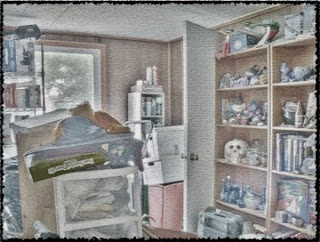 In the good old days of film photography, you had to spin a lot of dials, adjust a lot settings, make sure you had the right speed film for the subject, and so on and so forth. A nice modern digital camera set to Auto will do all the work for you and capture near perfect images every time.
In the good old days of film photography, you had to spin a lot of dials, adjust a lot settings, make sure you had the right speed film for the subject, and so on and so forth. A nice modern digital camera set to Auto will do all the work for you and capture near perfect images every time.
But just using a digital camera to take pictures is missing a great deal of the fun. Dropping those images into Photoshop and applying a filter or two is much more interesting.
One of my favorite magazines is called After Capture, from the makers of Rangerfinder. The very first issue was so amazing that every issue after that has been a bit of disappointment, but they are still fun to read and look at. One of the topics covered in that first issue was HDRI-Hugh Dynamic Range Images. Go find a dimly lite room with an outside window flooding in some light-like my junk room for instance. You take about 16 exposures of this room, using a tripod of course, and bracketing the images a couple of stops from underexposed to over exposed.
Once you have this series of images you open up Photoshop and use the Merge to HDR command under the Automate tab under the File tab. Give it a couple of minutes, if you have an older machine like mine, and you get an images where there is even exposure over the entire image. This means the trees outside the window are as clear as the odds and ends on the bookshelf. Once you have this HDR image you then run it through the Tone Mapping Plug-In and set to work adjusting the shadows and highlights until you like the way it looks.
Dan Burkholder‘s work was featured in After Capture and has been in Rangerfinder as well. To say that his work looks a bit better than my first attempt is an understandment. His HDR images are simply amazing. In the article he says that like uses FDRTools software for many of his images-this software helps with ghosting in your HDRIs.
There are a number books on the topic of HDRI and not all of them are about creating art. Just using this technique on a tough subject and getting an even exposure makes it worth learning. It is also a good way to process Infrared Digital Images. Use a 16-bit IR image with the Tone Mapping Plug-in and you’ll get a good range of shades. Then you can process it in Photoshop to remove the color and adjust the levels.
Flickr also has a nice selection of examples of HDRIs.
- Starfield – A Few Months In - December 23, 2023
- Still Just A Geek by Wil Wheaton - November 1, 2022
- Starfield First Impressions of Gameplay Reveal - June 13, 2022